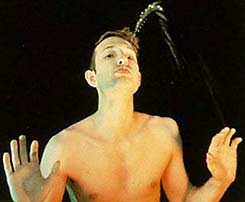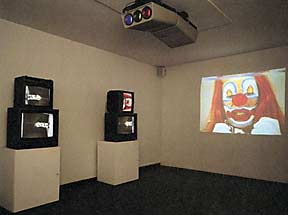Thomas Wolfe and The Painted Word
In The Painted Word, Wolfe began his essay by recounting a revelatory experience he had on April 28, 1974, while reading an art review by Hilton Kramer for the New York Times. Kramer, a leading proponent of abstract art, had written: "Realism does not lack its partisans, but it does rather conspicuously lack a persuasive theory" - a statement that provoked Wolfe to write:
"All these years, along with countless kindred souls, I am certain, I had made my way into the galleries of Upper Madison and Lower Soho and the Art Gildo Midway of Fifty-seventh Street, and into the museums, into the Modern, the Whitney, and the Guggenheim, the Bastard Bauhaus, the New Brutalist, and the Fountainhead Baroque, into the lowliest storefront churches and grandest Robber Baronial temples of Modernism.
All these years I, like so many others, had stood in front of a thousand, two thousand, God-knows-how-many thousand Pollocks, de Koonings, Newmans, Nolands, Rothkos, Rauschenbergs, Judds, Johnses, Olitskis, Louises, Stills, Franz Klines, Frankenthalers, Kellys, and Frank Stellas, now squinting, now popping the eye sockets open, now drawing back, now moving closer - waiting, waiting, forever waiting for… it… for it to come into focus, namely, the visual reward (for so much effort) which must be there, which everyone (tout le monde) knew to be there - waiting for something to radiate directly from the paintings on these invariably pure white walls, in this room, in this moment, into my own optic chiasma.
All these years, in short, I had assumed that in art, if nowhere else, seeing is believing. Well - how very shortsighted! Now, at last, on April 28, 1974, I could see. I had gotten it backward all along. Not 'seeing is believing,' you ninny, but 'believing is seeing,' for Modern Art has become completely literary: the paintings and other works exist only to illustrate the text."
And what was the "text" he spoke of? Wolfe asserted that the critics, museum directors, academics, and other "art experts" of the day, had become more important than the artists. These art authorities began operating like the clergy, but their religious duties were to the church of modern art. The proclamations of these high priests - i.e., figuration, narration, and realism in art was archaic and passé - became a divine text and considered the sacred word. No one dared to question the word for fear of being thought heretical. Metaphorically, the painted word began to appear in the work of artists devoted to the new orthodoxy (hence the title of the essay). Wolfe foretold our current predicament when he wrote:
"Every art student will marvel over the fact that a whole generation of artists devoted their careers to getting the Word (and to internalizing it) and to the extraordinary task of divesting themselves of whatever there was in their imagination and technical ability that did not fit the Word. They will listen to art historians say, with the sort of smile now reserved for the study of Phrygian astrology: 'That’s how it was then!' - as they describe how, on the one hand, the scientists of the mid-twentieth century proceeded by building upon the discoveries of their predecessors and thereby lit up the sky… while the artists proceeded by averting their eyes from whatever their predecessors, from da Vinci on, had discovered, shrinking from it, terrified, or disintegrating it with the universal solvent of the Word.
The more industrious scholars will derive considerable pleasure from describing how the art-history professors and journalists of the period 1945-75, along with so many students, intellectuals, and art tourists of every sort, actually struggled to see the paintings directly, in the old pre-World War II way, like Plato’s cave dwellers watching the shadows, without knowing what had projected them, which was the Word.What happy hours await them all! With what sniggers, laughter, and good-humored amazement they will look back upon the era of the Painted Word!"
[ Read more excerpts from Thomas Wolfe’s The Painted Word, or purchase the entire book from Amazon.com ]

